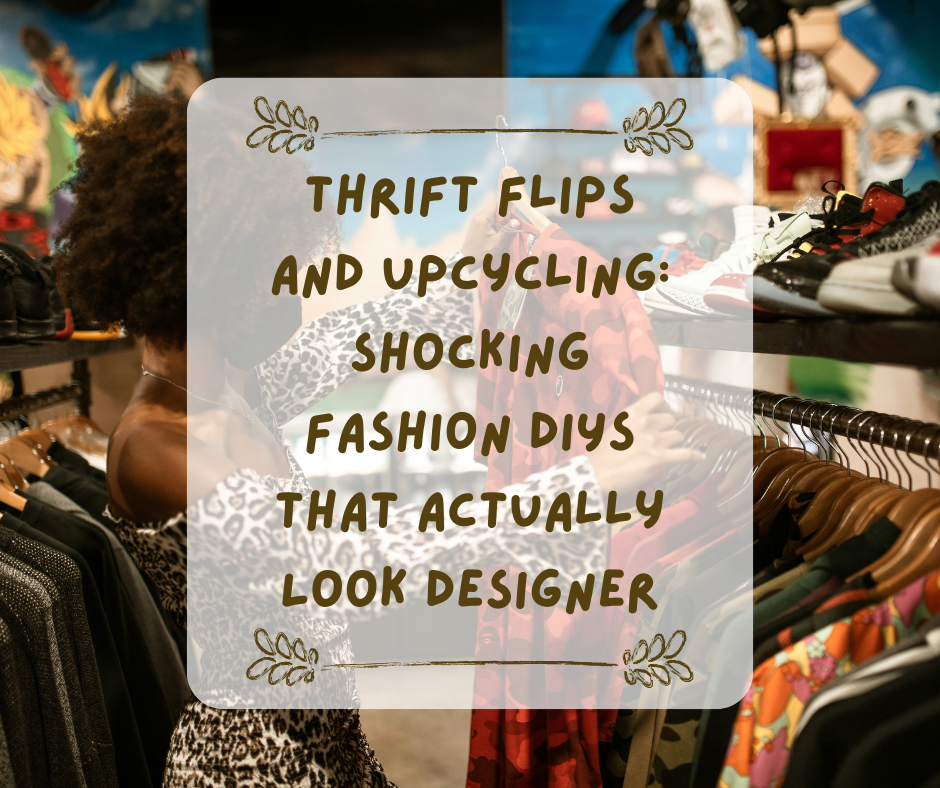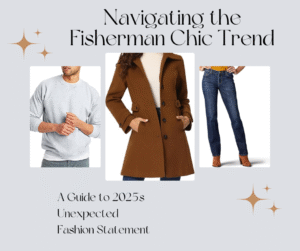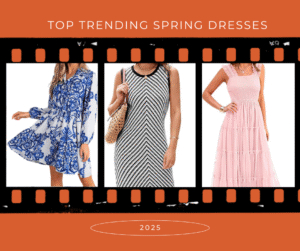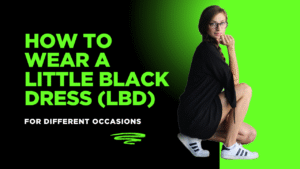This post may contain affiliate links. I may receive compensation if you sign up for or purchase any products through the links below. As an Amazon Associate and affiliate marketer for many other businesses, I earn from qualifying purchases. Please read my disclosure for more information.
In recent years, the concepts of thrift flips and upcycling have surged in popularity, particularly within the realm of sustainable fashion. This movement has encouraged individuals to rethink their clothing choices and embrace a more eco-conscious lifestyle. Thrift flips involve taking second-hand clothing items and transforming them into something entirely new and stylish, while upcycling refers to the creative process of repurposing unwanted materials into usable or fashionable pieces. Together, these practices not only contribute to environmental sustainability but also promote a unique form of self-expression and creativity.
The environmental benefits of repurposing old garments are significant. With the fashion industry being one of the largest polluters globally, engaging in thrift flips and upcycling reduces waste by extending the life cycle of clothing items. By choosing to upcycle instead of purchasing new, individuals divert these materials from landfills, thereby conserving valuable resources and minimizing their carbon footprint. This new wave of fashion activism allows consumers to make responsible choices while also showcasing their creativity.
Moreover, thrift flips can lead to substantial cost savings. Shopping at thrift stores or second-hand shops often yields incredible bargains compared to purchasing new, high-end items. As fashion enthusiasts delve into DIY projects, they often discover the joy of creating unique garments that rival designer pieces in appearance and quality. This not only helps them to save money but also fosters a sense of personal achievement as they breathe new life into discarded items. In a world increasingly focused on sustainability, thrift flips and upcycling serve as practical and stylish alternatives that align with a growing eco-friendly lifestyle.
Finding the Perfect Thrift Store Treasures
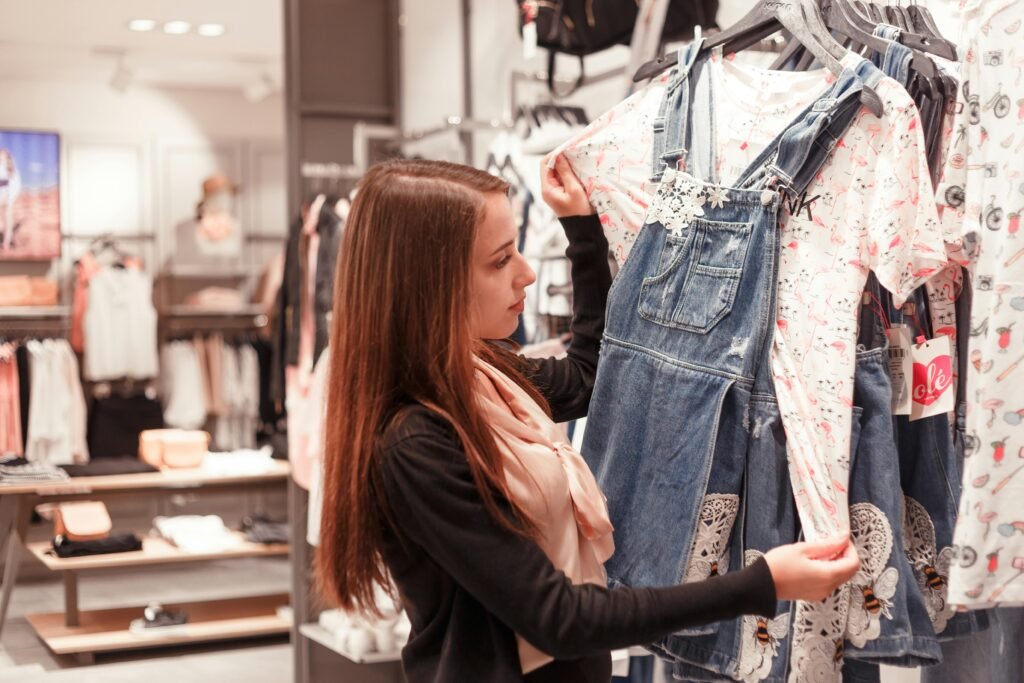
When embarking on the journey of thrift shopping, it is essential to approach with both a keen eye and a strategic mindset. Thrift stores are brimming with potential; however, unearthing those hidden gems often requires patience and practice. To begin, familiarize yourself with the types of fabrics that indicate quality. Look for natural materials such as cotton, wool, and linen, as they often outlast synthetic alternatives, providing a sturdier foundation for any DIY project.
Another critical consideration is staying attuned to current fashion trends. Familiarize yourself with the styles that are making waves in the fashion industry. For instance, oversized blazers, vintage jeans, and unique accessories are popular choices, making them more desirable in thrift stores. Yet, be mindful of personal style; even if something is trending, it should resonate with your fashion sense to ensure satisfaction after your thrift flip.
Spotting potential in overlooked pieces is an acquired skill. An item might appear outdated, but with a little creativity, it can be transformed into something fabulous. Look for garments that can be altered easily, such as oversized dresses that can be tailored or denim pieces that can be bleached or distressed. Always envision how an item can be repurposed or combined with other pieces in your wardrobe.
Setting a budget before stepping into a thrift store is equally vital. Determine how much you are willing to spend and consider creating a list of items you are hoping to find. This strategy not only narrows your focus but also helps you avoid impulse buys. Lastly, visiting thrift stores during off-peak hours may lead to a more enjoyable experience, allowing you ample opportunity to explore and find those elusive fashion treasures. Happy thrifting!
Essential Tools and Materials for Upcycling
Upcycling thrifted clothing into fashionable, designer-inspired pieces requires a range of tools and materials to achieve the best results. Whether one is a beginner venturing into the realm of fashion DIY or an experienced creator looking to refine skills, having the right supplies is pivotal for successful outcomes.
At the core of any upcycling project, basic sewing supplies are essential. A good-quality sewing machine, paired with various needles suitable for different fabrics, will facilitate many projects. Thread in a variety of colors, embroidery scissors, and fabric pins are also critical in ensuring precision and neatness in your work. For those who prefer a hand-stitching approach, a sturdy thimble and an assortment of needles can enhance the crafting experience.
Paints and embellishments play a significant role in transforming thrifted items. Fabric paints are a versatile option that allows crafters to add intricate designs, patterns, or even personal messages to their pieces. Moreover, these paints are available in various finishes, such as matte and glossy, enabling the creation of unique looks. Additionally, embellishments like lace, sequins, and buttons can add texture and depth, helping to elevate a simple garment into something truly special.
As one progresses in their upcycling journey, they may wish to explore more advanced tools. A heat transfer press or a fabric cutter can refine various designs, while cutting tools such as rotary cutters can enhance fabric manipulation. With these advanced tools, creators can delve deeper into complex upcycling techniques, such as creating patchwork designs or implementing appliqué techniques. By gathering the right materials and tools, anyone can embrace the world of thrift flips and upcycling, crafting garments that reflect stylish individuality.
DIY Techniques to Transform Your Thrift Finds
Transforming thrifted items into stylish wardrobe pieces can be a rewarding and creative endeavor. To achieve that coveted designer look, several DIY techniques can be employed. Among the most effective methods are dyeing, cutting, sewing, and adding embellishments, each of which can elevate an ordinary piece into a fashionable statement.
Dyeing is one of the simplest ways to breathe new life into thrifted garments. For instance, a faded white shirt can be transformed into a vibrant hue using fabric dye. This technique works best on natural fabrics like cotton and linen, as synthetic fibers may not absorb dye as effectively. Additionally, ombre and tie-dye effects can create unique patterns, allowing for customization that mimics high-end brands.
Cutting is another impactful technique that can dramatically change the silhouette of a thrift find. For example, an oversized vintage sweater can be cropped to enhance modernity or a pair of jeans can be turned into stylish shorts. When cutting, it is essential to plan the design beforehand to ensure symmetry and avoid any mishaps that could compromise the garment’s overall aesthetic.
Sewing is often essential for alterations and creating custom fits. Adding darts, adjusting hemlines, or even reconstructing hems can give thrifted pieces a tailored appearance reminiscent of designer items. For those who may be less experienced in sewing, simple hand-sewing techniques can still yield impressive results, such as creating tucks or small pleats.
Lastly, adding embellishments such as patches, embroidery, or beads can lend a unique touch to thrifted items. A plain denim jacket adorned with colorful patches or a knitted dress enhanced with delicate embroidery can reflect personal style while showcasing creativity. Each of these techniques offers a pathway to thrift flips and upcycling success—blending innovation with style.
Case Studies: Successful Thrift Flips
The world of thrift flips and upcycling presents numerous inspiring examples of individuals who have turned modest thrift store finds into remarkable fashion statements. One notable case study involves a vintage denim jacket purchased for a mere $5. The original item featured dated embellishments and a loose fit. With a vision for transformation, the owner meticulously removed the outdated decorations and restyled the jacket by taking in the sides to achieve a more tailored silhouette. The pièce de résistance was the addition of hand-painted floral designs, which infused the piece with a fresh, contemporary flair reminiscent of top designer brands. The result was a stunning jacket that not only drew attention but also garnered compliments for its unique look.
Another intriguing case revolves around a simple, thrifted black dress. Initially priced at $10, this dress was nothing special—just a classic silhouette with a modest cut. The transformation began with a creative twist; the individual added layers of sheer fabric to the sleeves for a trendy puff effect. Furthermore, a belt from an old handbag was repurposed to cinch the waist, enhancing the garment’s structure and giving it a high-fashion appearance. After the modifications, the dress emerged looking chic and desirable, mimicking high-end runway styles.
A third case study showcases the revival of a pair of worn-out leather boots found for $15. Rather than discarding them, the owner decided to embrace an upcycling approach. The first step involved cleaning and conditioning the leather, followed by a creative dye job to introduce a rich, deep hue. To add a luxurious touch, decorative studs were meticulously placed along the seams. The result was a pair of eye-catching boots that not only fulfilled the owner’s style aspirations but also echoed trends seen in luxury fashion houses.
Styling Tips for Your Upcycled Fashion Pieces
Integrating upcycled fashion pieces into your wardrobe can transform your style while promoting sustainability. The first step in achieving a polished look with your thrift flips and upcycling creations is understanding how to mix and match these unique garments with everyday essentials. For example, pairing an upcycled denim jacket with a classic white tee and tailored trousers can create a balance between casual and chic. This approach allows your thrifted pieces to stand out without overwhelming your overall outfit.
Accessorizing plays a vital role in elevating your style when working with upcycled fashion. Choosing the right accessories can enhance the aesthetic of even the simplest garments. Consider adding a statement belt to cinch the waist of a loose-fitting thrift flip dress or incorporating bold earrings to draw attention to your upcycled top. Additionally, opting for a contemporary handbag can lend a designer edge to your overall look, further emphasizing the unique characteristics of your DIY pieces.
Furthermore, confidence is key in showcasing your thrifted creations. When you wear something you’ve upcycled, it reflects your creativity and individuality. Standing tall and embracing your outfit not only makes a visual statement but also inspires others to appreciate the beauty of fashion DIYs. Experimentation is encouraged; don’t hesitate to mix patterns, textures, or colors that resonate with your personal style. The charm of upcycled fashion lies in its versatility, so let your creativity shine as you curate an outfit that feels authentic to you.
Ultimately, the effectiveness of integrating thrift flips into your fashion repertoire hinges on your willingness to express yourself through them. By thoughtfully mixing and accessorizing your upcycled garments and wearing them with confidence, you can effortlessly create a designer-inspired look that is both stylish and sustainable.
The Future of Thrift Flips in Fashion
The future of thrift flips in fashion signifies a transformative shift towards sustainable practices that seamlessly intertwine with mainstream culture. As environmental concerns and consumer awareness increase, the practice of upcycling has emerged as both a fashion statement and a sustainable alternative to fast fashion. In this evolving landscape, thrift flips not only encourage creativity but also support the growing demand for customizable fashion, allowing individuals to express their unique style while minimizing waste.
Influencers and brands alike are recognizing the potential of thrift flips to resonate with a consumer base that values authenticity and sustainability. This trend is propelling thrift stores onto a pedestal, where they are viewed as treasure troves filled with potential fashionable pieces waiting to be reimagined. Social media platforms have played a significant role in this resurgence; DIY enthusiasts regularly share their transformations and hacks, inspiring countless individuals to engage with second-hand clothing creatively. Additionally, as more fashion icons adopt upcycling into their wardrobes, they serve as influential advocates for the circular economy, heightening its importance within the fabric of society.
In conjunction with the rise of thrift flips, a broader movement towards responsible consumption is gaining traction. The desire for fashion that emphasizes quality over quantity is leading to collaborations between established brands and local artisans to create limited-edition collections informed by recycled materials. This paradigm shift not only fosters creativity but also sustains economic growth within communities centered on sustainable practices. Thus, thrift flips and upcycling initiatives stand at the forefront of a cultural evolution, where interconnectedness, artfulness, and environmental consciousness converge, paving the way for a more sustainable future.
Community and Resources: Connecting with Other DIY Enthusiasts

Engaging with a community of like-minded individuals can greatly enhance your experience in thrift flipping and upcycling. The passion for transforming pre-owned items into fashionable pieces has led to the formation of various online platforms and local workshops where enthusiasts can share their ideas, resources, and inspirations. Utilizing social media is an effective way to connect with others who share your DIY interests. Platforms such as Facebook and Instagram offer numerous groups and hashtags dedicated to thrift flipping and upcycling. By joining these communities, you can access a wealth of knowledge, from tutorials to project showcases, and even connect with local DIY meetups.
Blogs dedicated to DIY fashion also serve as a valuable resource. Many of these blogs offer step-by-step guides, creative inspiration, and insights into the latest trends in upcycling. Subscribers can engage with the content by sharing their own projects, which can further foster a sense of community. Additionally, popular platforms like Pinterest allow for the discovery of new DIY projects, offering countless ideas that can spark creativity in your own work.
Furthermore, workshops and events specifically focused on thrift flipping and upcycling provide an excellent opportunity to learn new skills while networking with fellow DIY enthusiasts. Many local craft stores and community centers regularly host classes that can enhance your understanding of different techniques, materials, and styles. This hands-on experience combined with the shared enthusiasm of participants can be both motivating and rewarding.
Moreover, online forums dedicated to DIY culture enable members to discuss challenges, ask questions, and share successes. Engaging in these digital spaces can help foster supportive relationships, leading to collaborative projects or even friendships. Overall, being a part of a community not only provides inspiration but also vital support throughout your thrift flipping and upcycling journey.
Conclusion: Embrace Your Inner Fashion Designer
As we delve into the world of thrift flips and upcycling, it becomes evident that these creative endeavors are not merely about saving money; they represent an opportunity for self-expression and sustainability. Throughout this exploration, we have discussed various techniques that allow individuals to transform ordinary thrift store finds into extraordinary pieces that echo a designer-inspired aesthetic. The art of upcycling enables fashion enthusiasts to craft unique garments and accessories, fostering a distinctive wardrobe that tells a personal story.
One of the most compelling aspects of engaging in thrift flips is the profound sense of satisfaction derived from undertaking these innovative projects. Each transformed item stands as a testament to one’s creativity, showcasing a personal touch that cannot be replicated in mass-produced fashion. Wearing these unique pieces allows individuals to express their style boldly and stand out in a world often dominated by uniformity.
Beyond personal gratification, embracing sustainable fashion practices provided by thrift flips aligns harmoniously with environmental stewardship. By recycling and upcycling textiles, we contribute to reducing waste and lowering the carbon footprint associated with fast fashion. These efforts not only help in preserving the planet but also inspire a deeper appreciation for the craftsmanship involved in every piece, fostering a culture of mindfulness in fashion consumption.
In the realm of fashion, it is pivotal to recognize the value of creativity and individual expression. Each thrift flip offers an invitation to explore one’s artistic side while making thoughtful choices that benefit both oneself and the environment. In embracing your inner fashion designer through these DIY projects, you join a movement of conscious consumers who are reshaping the fashion landscape—one unique creation at a time.

